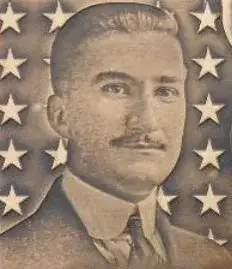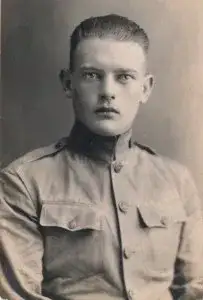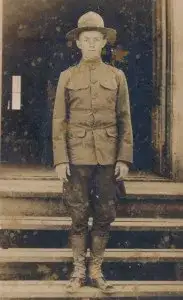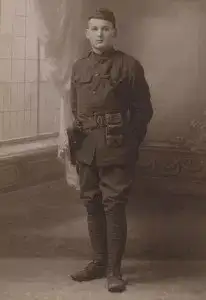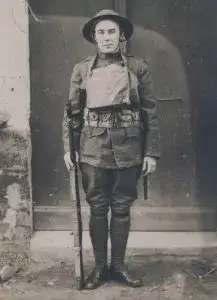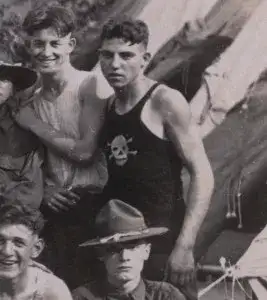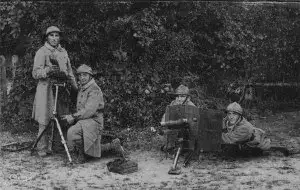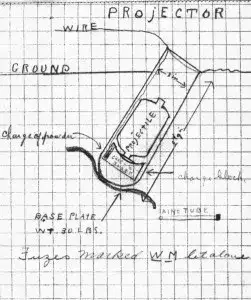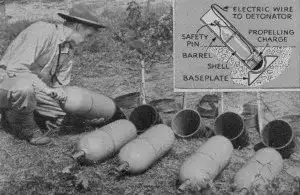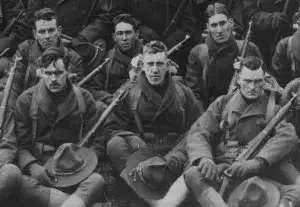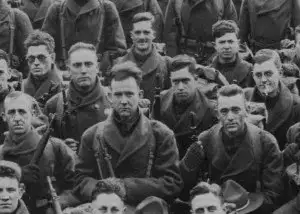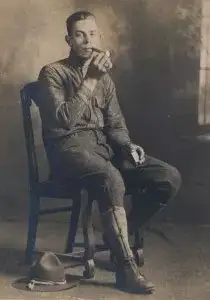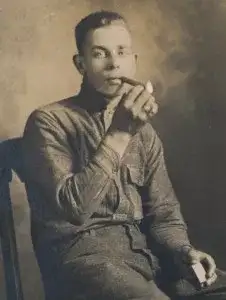An American veteran you should know
November 11, 2023 by Thomas Wictor
I’d like to introduce you to an American veteran you should know. The only information I have about him is his name. That alone is pretty astounding, but there’s something else you’ll see that will inspire you to aspire. Meaning, I hope this post will help you see that daunting odds can generally be overcome.
Today in the United States is Veterans Day. It was originally Armistice Day, named after the cessation of hostilities that ended World War I. That was one of the most surreal days in human history. The Armistice took place at 11:00 a.m on November 11, 1918—the eleventh hour of the eleventh day of the eleventh month. Until 11:00 a.m., both sides fought like maniacs. At 11:00 a.m., all the shooting stopped.
Sergeant Henry Gunther, United States Army, was the last man to die in World War I. He was killed in action at 10:59 a.m., November 11, 1918. Gunther disobeyed orders and charged a German machine-gun nest. The Germans shouted at him that the war was over, but he kept coming. So they killed him. He was twenty-three years old.
I collect World War I postcards from all nations. American postcards usually aren’t very interesting because most of them just show the soldier and nothing else. One type is the head-and-shoulders portrait.
That’s Samuel Keuren, an infantryman. All I know is his name.
The other most common type is the continental-US-training-camp-campaign-hat-arms-by-the sides.
His name is Gait Stuart.
Then we have overseas-armed-with-a-pistol.
Private Ben Smith, US Army infantry, who’d served in France for six months, as indicated by the downward-pointing chevron on his lower left sleeve. He sent this card to his neighbor, a woman he addressed as “Mrs.” A likely story…
Finally, the most coveted postcards are those that show an American doughboy in full combat gear.
His name isn’t given, but he’s a member of the Chemical Warfare Service, and he’s equipped with a steel helmet, a gas mask on his chest in the “alert” position, a web belt with ammunition pouches, a bayonet, and a rifle. The chevron on his lower left sleeve indicates six months’ service overseas, and on the back it says, “Married 1919.” So he survived the war.
Every now and then I find oddities, such as this man from the Howitzer Company, 106th Infantry Regiment.
That’s an extremely non-regulation undershirt. The Howitzer Company of an American infantry regiment consisted of one trench-gun platoon armed with three 37 mm guns and one trench-mortar platoon armed with three 3-in (60mm) trench mortars.
Here’s the 3-in mortar on the left and the 37mm trench gun on the right. Those are French soldiers; American troops used French and British weapons and equipment because our own military was totally unprepared for war.
Maybe the American Howitzer Company infantryman with the non-regulation death’s-head undershirt felt especially lethal, given the ordnance he was assigned.
I bought a gigantic group photo of the 30th Engineer Regiment (Gas and Flame). It’s five feet (1.5m) long. These were the men who went to war with chemical and incendiary weapons. In the end the Americans didn’t adopt flamethrowers, but they used white-phosphorus mortar shells and poison-gas shells fired by the Livens projector.
This is a sketch of a Livens projector drawn by a motorcycle courier required to undertake a class on chemical weapons. I found his notebook in an antique store.
The projectors were buried in the earth in batteries of twenty-five. They fired either poison gas or shells filled with oil used to burn the enemy alive.
And you thought the world was getting worse! Most of you have no idea.
These are men from the 30th Engineer Regiment (Gas and Flame), the soldiers who operated the weapons that fired white phosphorus, poison gas, and flame oil.
It was an all-volunteer regiment, and the only requirements were a knowledge of machinery or chemistry and above-average physical strength. Looking at those faces, I think an uncompromising disposition was also a prerequisite.
The men of the 30th Engineers were known as the “Hellfire Boys.” I’m sure they drew their share of eccentrics. Look at the two with their natty shades.
One of my favorite postcards
This postcard of an American infantryman in World War I is special. I’ve never seen another like it.
Not only is he lighting a cigar for his official portrait, he’s Indonesian. His name is Prilin Top. All it says on the card is “Prilin Top, 1918.”
In 1918 there were about 180,000 Asians living in the US. Can you imagine what life was like for Prilin Top even before he was drafted or volunteered for the army? As my brother Tim said, the only context anyone would have for Indonesians—and it would be a warped context—was Chang and Eng Bunker, the original Siamese twins. Americans in 1918 would think of Prilin Top as a wayward circus performer.
In 1918 Indonesia was called the Dutch East Indies. Prilin Top came from a people living under colonial rule. But that photo!
Does he look like anybody’s peon? My gut tells me the cigar was his idea. I thought he might have blue eyes, which could mean mixed heritage. If so, his name indicates that a Caucasian woman married an Indonesian man. That must’ve gone over like a lead balloon in 1918 America.
But I’ve learned that the insanely bright flash powder of the day could make brown eyes look very light. Thus I don’t know if he was a full-blooded Indonesian or if only his father came from the archipelago.
Happy Veterans Day, Prilin Top. I’ll bet you were an amazing person.
This article viewed 468 times.

